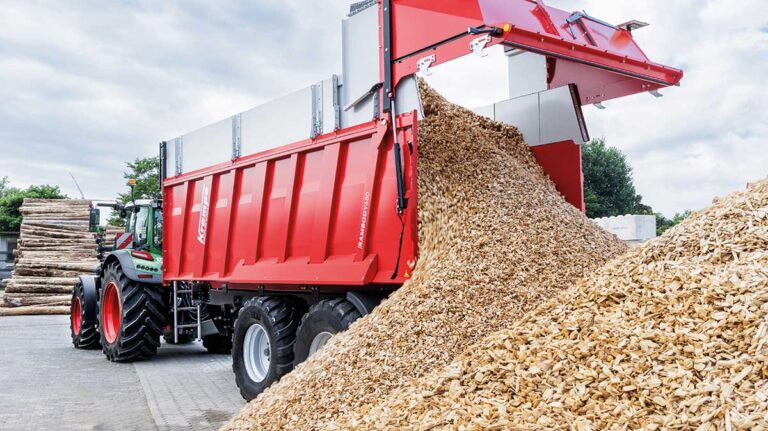Tipping trailers remain a popular option on farms, but as the need for greater capacities has increased, these come with some inherent risks depending on the circumstances.
On solid ground, with nothing overhead, the tipping trailer works perfectly, with a powerful ram lifting the front to allow gravity to do the rest.
When working in low-ceilinged, traditional buildings, there is a risk of not being able to fully lift the trailer. When on uneven ground, the sudden change in the centre of gravity can make tipping trailers unstable, posing a risk to the operator and anyone in the vicinity.
This is without mentioning the potential danger when working around overhead powerlines.
The development of push-off trailers has therefore been welcomed, especially during silage season. As well as maintaining the same centre of gravity during emptying, reducing the risk of incidents, the trailer can also compact the material in the trailer.
This is particularly handy when on long runs from the field to farmyard, as operators can maximise the amount of crop in the trailer.
Below, we highlight just some of the units available on the market, offering some of the highest capacities available to suit the most intensive silage operations.

Hi-Spec
The Kompactor is available in three sizes – the K36 (36cu m), K40 (40cu m) and K50
(50cu m). Central to the range is the hydraulically operated headboard, which is powered by a three-stage hydraulic ram.
For compacting, with the heavy-duty tailgate shut, the headboard can be used to compact material such as grass or maize silage, increasing the load carried by up to 30%.
To empty, the headboard is fully extended and, depending on the load, has the capacity to completely empty the trailer in as little as 40 seconds. Allied to this is the low centre of gravity, reducing the inherent risks of using a tipping trailer, such as striking overhead power lines or trailer instability when tipping on soft and uneven ground.
The Kompactor is lighter in weight compared with a conventional trailer, with no lifting rams or the necessary bracing. As standard, all models are equipped with commercial running gear, air/hydraulic braking and a hydraulically sprung drawbar, through which all of the hydraulic and electric lines are routed, LED lighting and reversing light.
The K36 comes with a tandem axle and optional steering, while the K40 has a tri-axle with passive rear steering and the
option of front and rear steering. The K50 comes with a tri-axle with front/rear steering as standard.
The company also offers the PD20 Push-off Dump Trailer, with a heaped load volume of 14.5cu m, giving it a carrying capacity of 20t, and uses the push-off technology originally designed for the Kompactor range.
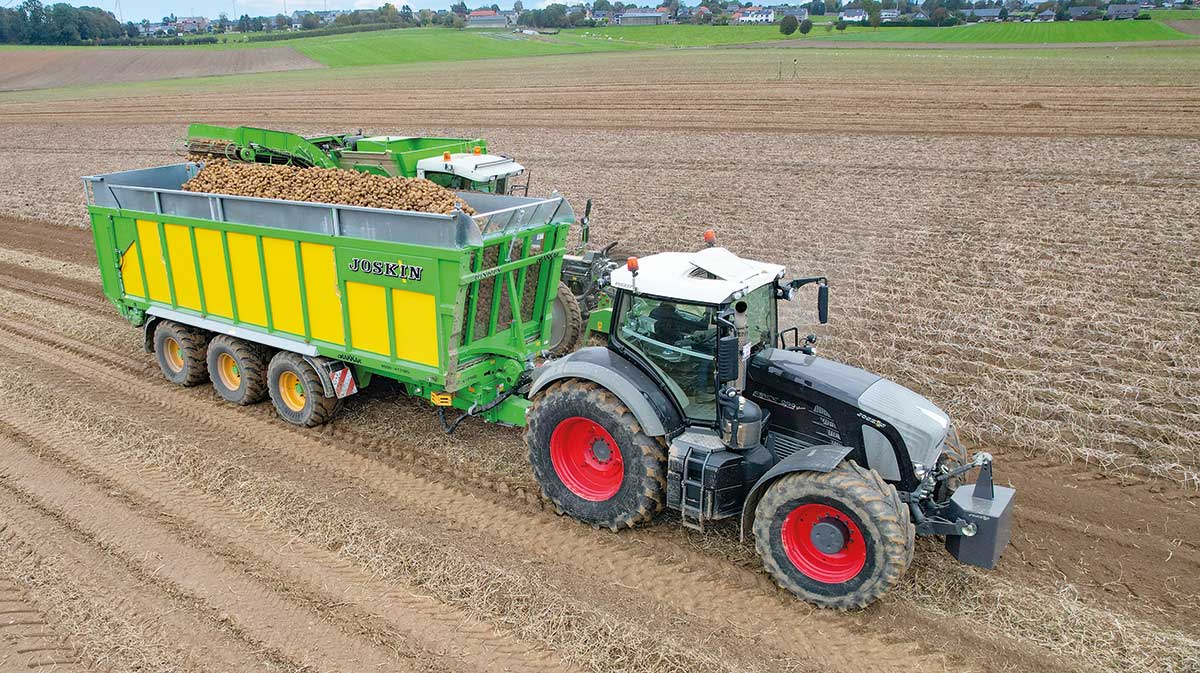
Joskin
In 2011, Belgian agricultural machinery manufacturer Joskin presented the Drakkar. Combining a conveyor belt floor with a moving headboard, it can be used to transport all types of goods.
Available with twin- or tri-axle running gear, from 23cu m up to 46cu m, the Drakkar is not a push-off trailer, as the front wall cannot compact the matter. According to the company, this reduces the stress on the side walls, which are made of polyfont to lower the empty weight.
For faster unloading, the Drakkar is wider at the back (+4cm) and the front wall accompanies the moving floor to the rear to empty the load. Since it is not tipping, matter can be unloaded under low roof sheds, increasing safety. Whatever the type of product, Joskin says the emptying speed is less than one minute.
For those looking for even more capacity, Joskin designed the Silo-Space 2. Available in twin- or tri-axle, from 48cu m to 59cu m capacity, it comes with a moving floor made of chains that pull the cargo towards the rear.
The body has aluminium side walls to cut the empty weight and maximise payload. Designed to transport silage, the trailer comes with a reclining front wall, which gives a 750mm clearance for opening the field with a combine.
To better protect steel against corrosion, the chassis is fully galvanised, and thanks to its integrated chassis, the Silo-Space 2 sits very low, allowing more body volume and safety in tough conditions.
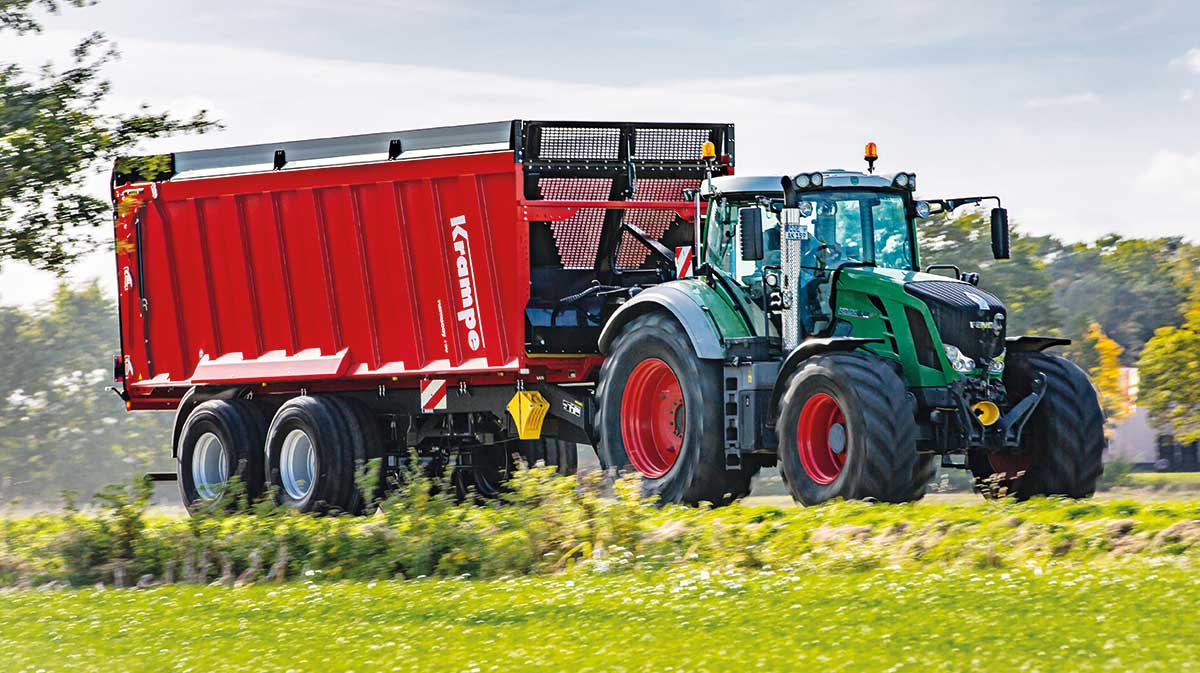
Krampe
Brought into the UK by Continental Soil Technology, the Krampe push-off trailer range comprises three models; the tandem-axle Rambody 680 and 750, offering respective capacities of 22.3cu m and 36.3cu m, and the tri-axle Rambody 900 for capacities up to 43cu m.
All the capacities are before the fitment of optional silage extensions, or the optional Volume rear door, which can be retrofitted to existing machines and increases the capacity by 2.5cu m.
Options include full Isobus compatibility and a forced steer system, which requires no sensors. Heavy-duty axles come with parabolic spring suspension as standard, as well as dynamic compensation, with the option of pneumatic or hydraulic systems.
Looking at the pushing blade, the five double-acting rams are protected by a narrow tunnel, mounted behind the centre of the blade to stop damage or crop residue ingress.
The pushing blade is designed with a mesh pattern, enabling the operator to see the crop. A grain-proof version is also available to increase versatility.
The body is one piece and screwed to the chassis for dismounting, if necessary. The hydraulic tailgate comes with a locking system, with a load safety valve.
Rear lights with shock-resistant lenses are mounted in the lower part of the rear tailgate, as well as white front-position lamps, yellow side marker lamps and a modularly designed rear underride guard, which can be swivelled upwards.
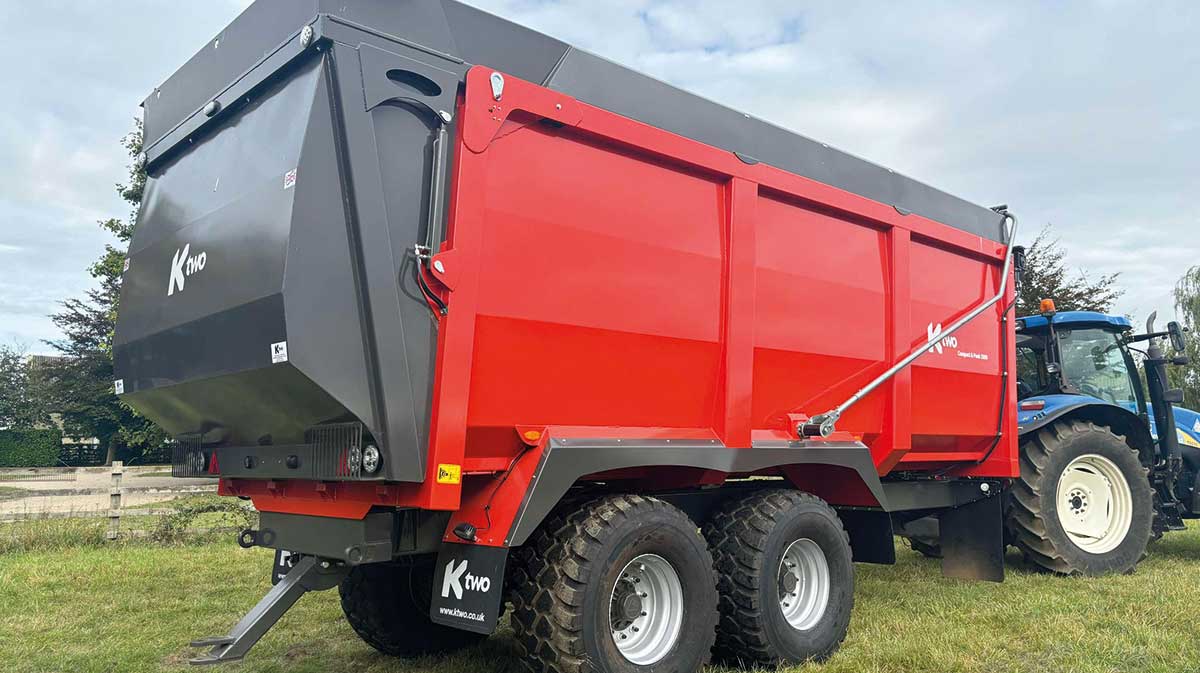
Ktwo
Ktwo has come through the financial difficulties it suffered at the start of the year. Now owned by Northern Irish manufacturer Redrock Machinery, the company continues to build its range of push-off trailers, having just delivered two 25t-capacity Curve Pusher units, with active hydraulic suspension, in-cab weighing and front and rear steering, as well as a lifting front axle and a transcover.
Key selling points within the range include the combination of a moving floor and hydraulic headboard. Not only does this enable the trailer to be unloaded in low buildings or on sloping sites where stability may be an issue, but it allows the crop to be compressed by up to 50% to boost trailer capacity.
The pusher system is fully sealed, meaning crop matter cannot build up around the components. Additionally, the headboard is slotted, with a glazed polycarbonate window so the user can see into the trailer.
Commercial-grade, 120mm square axles are mounted beneath the body, with 10-stud hubs. These are fitted with parabolic spring suspension and set to a 2m track width for maximum stability. The running gear is completed with 420x180mm brakes, providing 50% braking efficiency, according to the company.
The body is made of a single sheet of high-tensile steel, shot-blasted and finished with 130-micron, two-pack acrylic paint. The hydraulic tailgate features four-point locking, with an indicator to tell the operator when it is open.
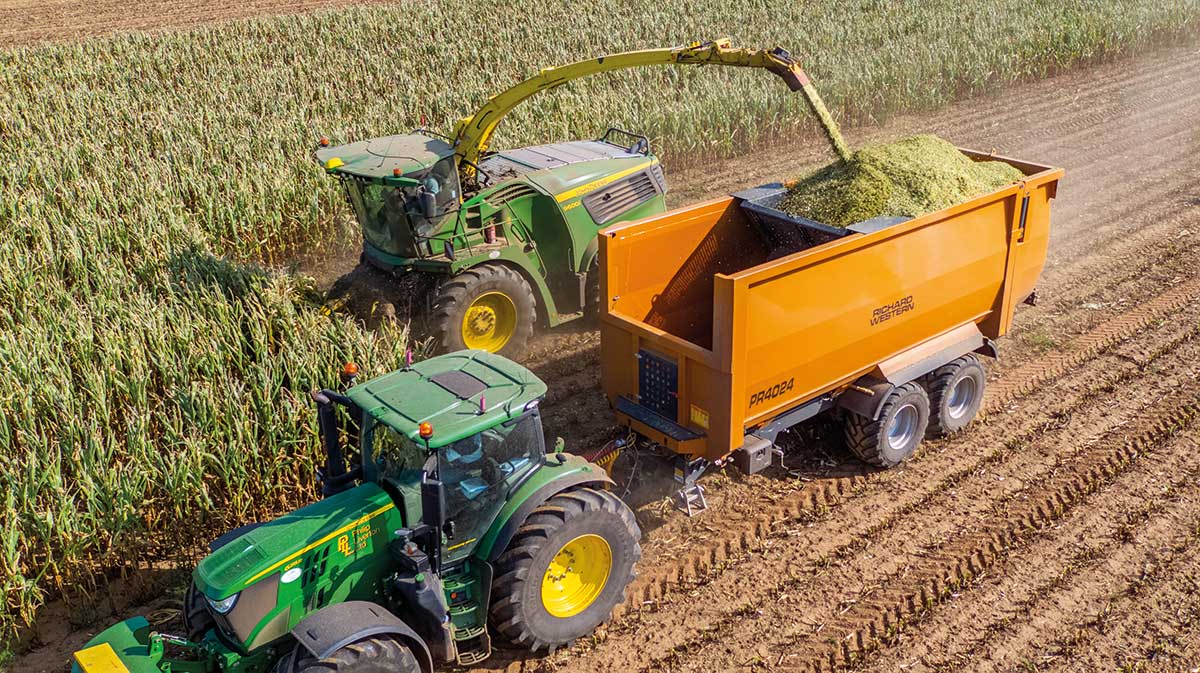
Richard Western
Available in capacities from 30cu m up to 50cu m, before compaction, with a maximum carrying capacity on the PR5030 of 30t, the Pusher Ram trailer from Richard Western comes as standard with 10-stud commercial axles, with torque arm suspension to suit the larger-diameter agricultural wheels. The sides and floor are made from a single piece of steel, with 8mm thickness at the floor and 5mm at the sides.
The pusher blade is supported with four industrial wheels to reduce friction during unloading and it has a thermoplastic seal to ensure that no crop residue can get behind the blade and become lodged. An additional lining is also available for working in cereals.
At the rear, the tailgate is fitted with both mechanical and hydraulic locking for additional security.
The trailer has been developed to be a versatile unit, with the ability to gradually move the pusher blade. This means that any cargo within the trailer can be partly unloaded, so the operation can be adjusted to suit the person working on the clamp.
Tandem-axle models are powered by the tractor hydraulics, while the tri-axle units are fitted with an on-board hydraulic system powered by the PTO. Hydraulic suspension is available as an option, with the add-on of a load cell weigher if required, as is dual braking and a passive steering system. Customers can also opt for a front-to-back rollover sheet.


